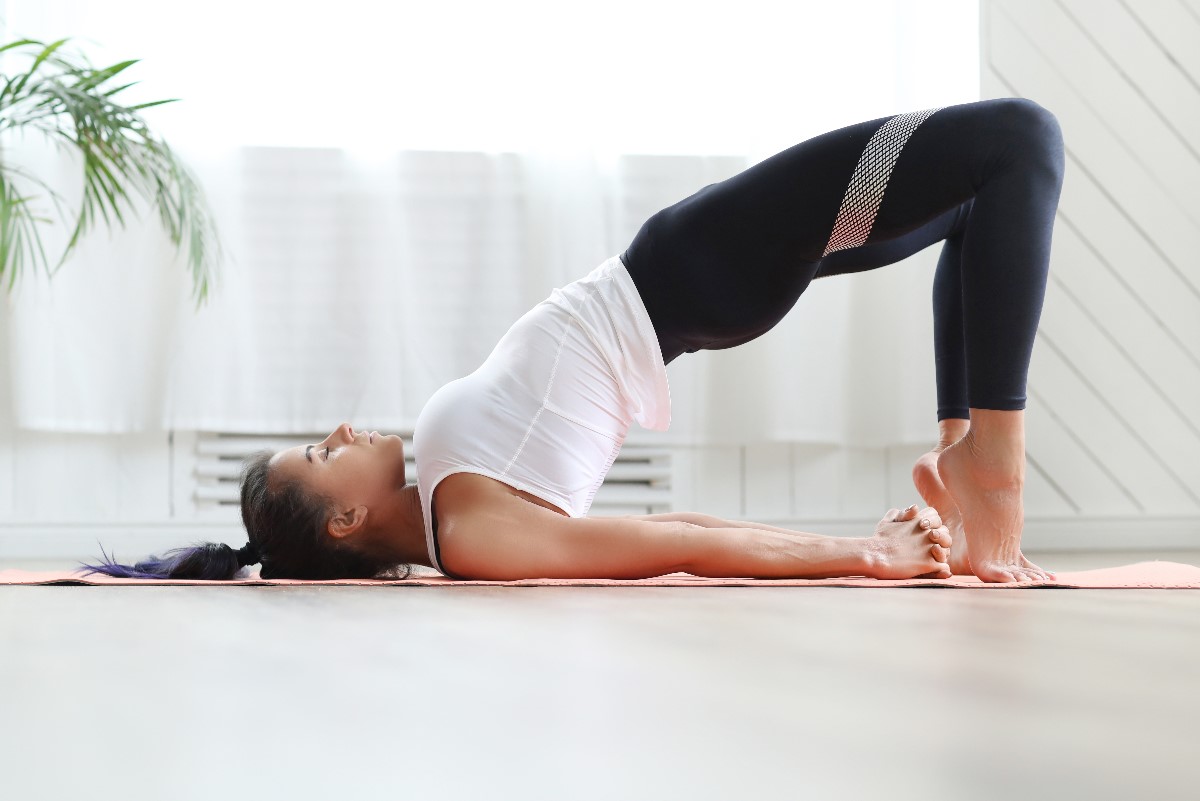
Long hours spent at the computer can make your neck or head hurt. Unfortunately, home office or a quarantine spent browsing memes and online stores does not have a positive effect on your spine. Pain and even reduced mobility of joints appear. Check how to effectively deal with this problem. Apply the stretching exercises proven by physiotherapists at home!
The cervical section is heavily overloaded when working at a computer. We often feel pain and even dizziness. This is because the neck is immobilized, often in an unnatural position for us. The exercise can be performed while sitting or standing. It stretches the sternoclavicular muscles. Sit or stand straight so that your chin is slightly forward. Hold your hand over your head and tilt your head to one side to slightly tense your muscles. Tilt your head first to one side, then to the other side, as if you want to touch your ear to your shoulder. Hold your head in this position for about 30 seconds, then change the position and the hand that is holding your head.
Interlace your hands behind your head and bend your elbows at the same time. Your neck should be straight and your chin should be slightly forward. Press the back of your head against your hands for several seconds. Then, gently press your chin against your chest. Breathe regularly and calmly. This exercise relaxes the trapezius muscle and neck muscles.
Raise your arms so that one hand rests on your neck and the other is bent 90 degrees and holding the elbow of the opposite hand. Pull the elbow slightly toward the other shoulder so that you feel a slight tension and relaxation of the dorsal muscles. Hold the hand in this position a little longer. To make it more difficult, you may also move your hand from the nape of the neck to the middle of the back, deepening the movement. While you are lying on your back, bend your arm slightly to the side. Perform the exercise on both sides several times each until you feel the back muscle relax.
This is an ideal exercise for people who have a problem with the lumbar region. It is recommended when treating sciatica. It can be performed standing up or lying down. It is effective in strengthening the back muscles.
Stand straight with your feet hip-width apart. Place your hands on your lumbar region, bending them at the elbows. Try to lean back so that your lumbar region pushes against your palms. Hold for a moment and then relax your back. Do this exercise several times.
Lie on your stomach with your palms at chest height. Your elbows should be positioned backwards and bent. Slowly arch your back while lifting your chest and abdomen up. Your lumbar region and hips must be tight to the ground. Stay in this position for a few seconds and then slowly return to lying down. While lifting yourself up, you can lift your head slightly up and bend it back. To enhance the effect, clench your buttocks firmly while lifting. Perform about 20 repetitions per day.
>> See: Spring body cleansing
Sit on a chair so that its backrest is on one of your sides. Straighten your back and start rotating your torso once to one side and then to the other. Remember to keep your hips still. Let your torso and shoulders be in motion. Rotation exercises are great for the mobility of the lumbar region, as well as its relaxation.
Sit up straight so that the upper spine is slightly tense. Try to lift both shoulders up and slowly lower them down as if you were shrugging your shoulders. Perform this exercise when you feel strong tension in the muscles of your arms and shoulders.
Photo source: Designed by Freepik